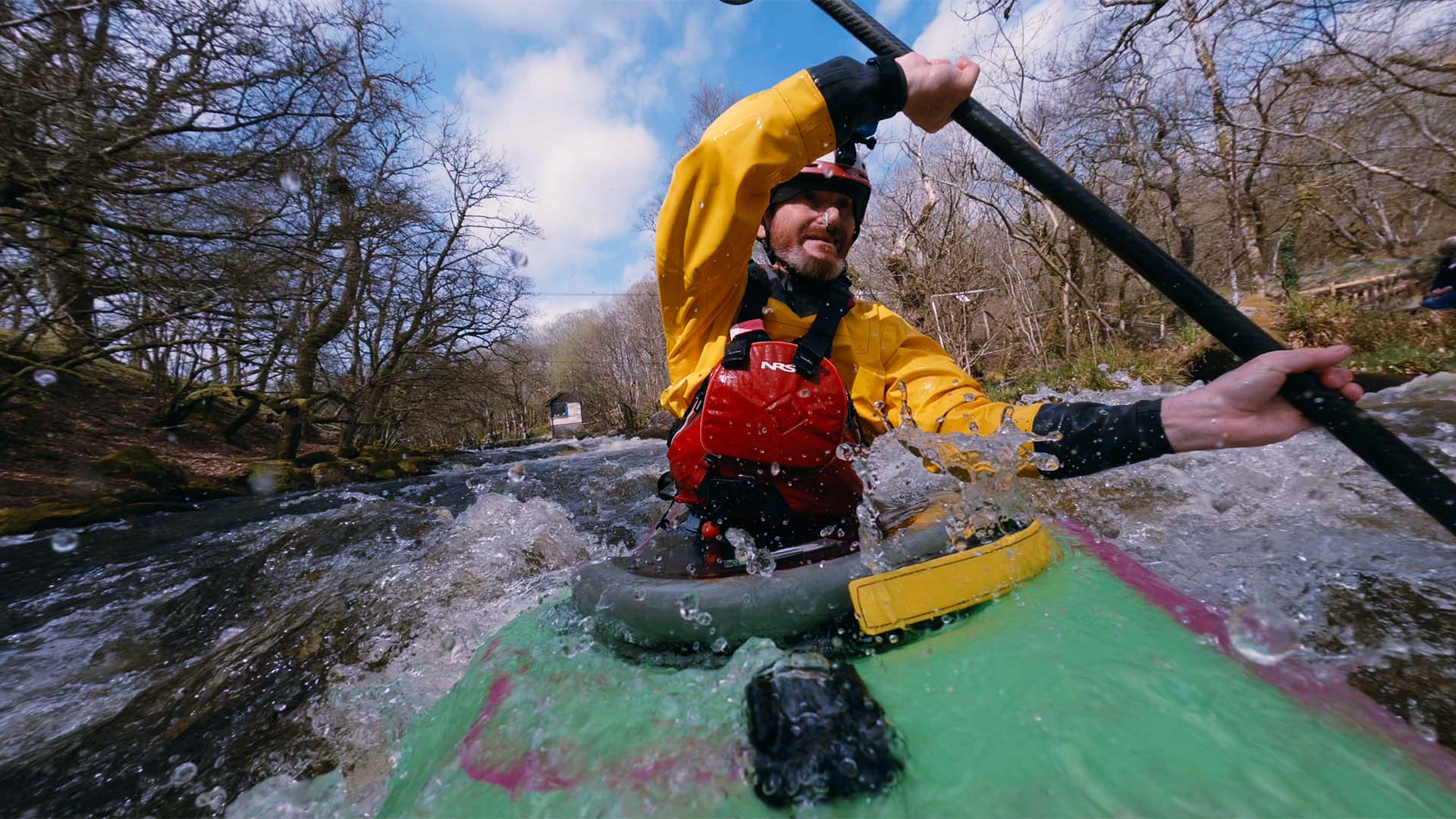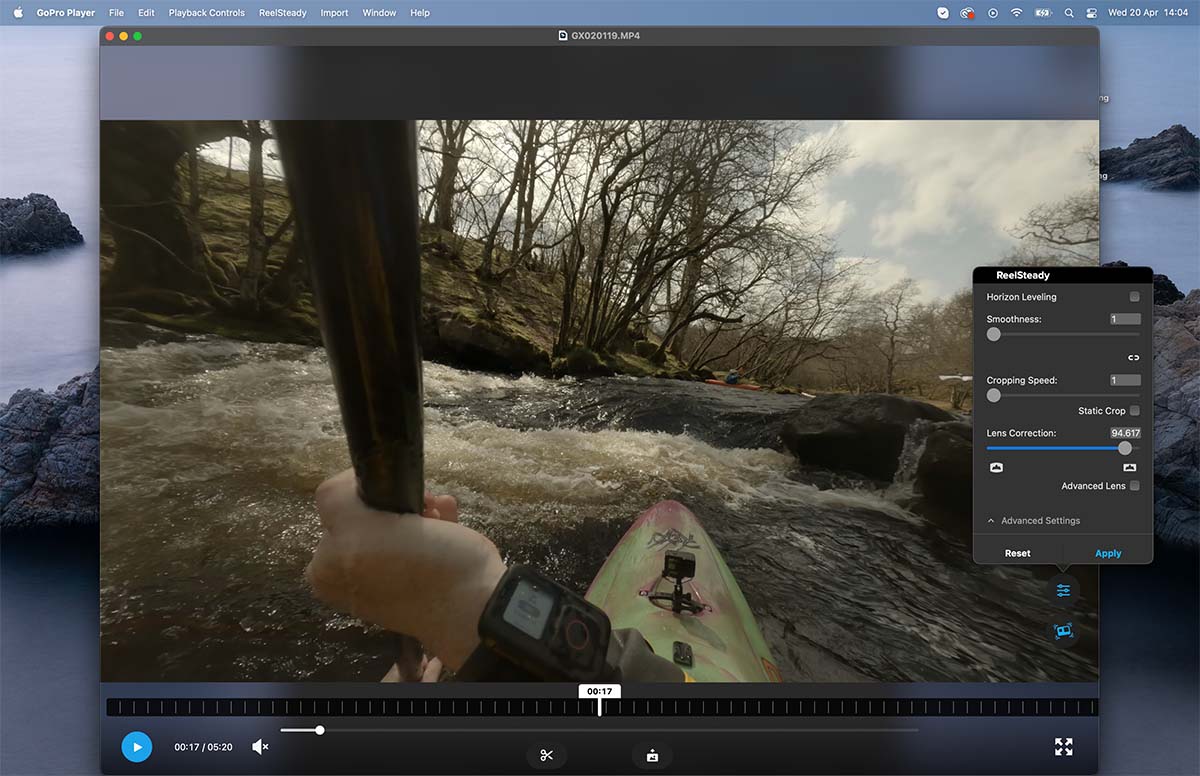
GoPro's built in HyperSmooth digital stabilisation is excellent. How do you improve it? With ReelSteady 2.0, that's how.
When GoPro recently announced its HERO10 Black Bones camera for FPV (sadly only currently available in the US), it also announced a significant update to its Player software.
A while back GoPro acquired ReelSteady. ReelSteady was one of the first, and best, pieces of software that was designed to stabilise GoPro footage before there was such a thing as HyperSmooth. Uniquely it used the gyro data from the camera's files to assist with making the shot as stable as possible, as well as eliminating the fish eye distortion of the lens as well. It was primarily designed for smoothing out drone and FPV flight shots, but it could be used for other purposes as well.
Now, GoPro has incorporated ReelSteady, specifically ReelSteady 2.0, into its Player software, and it can do things that the original software couldn't. The new stabilisation software can work with 16:9 clips, whereas the original was limited to converting 4:3 clips to 16:9 output. Additionally you can now further stabilise and tune existing HyperSmooth shots as well.
Once again, one of the main targets for the software is FPV users, but GoPro has recognised that others might want to use it as well. So you can take those MTB downhill shots and further stabilise them since it can be used for POV as well as FPV footage.
Using ReelSteady 2.0 on an edit
I decided to do some experimentation with ReelSteady 2.0 to see how well it could be used for typical GoPro style filming. I wasn't originally going to make much of it, since I was just experimenting with the new stabilisation software, as well as testing the Remote control. But I put together something anyway, and you can watch the result below.
I wanted the widest POV possible, so I switched off HyperSmooth, put both cameras into 4:3 4K mode, Flat colour, and Native White Balance to see what would happen on a short day out to the Tryweryn river. The Tryweryn is a short dam release river in North Wales, and varies in grade from grade 2 up to grade 4. The lines are simple, but there's a bit of push behind it, and injuries from swims on the Graveyard section are common amongst the inexperienced.
I had intended to do rather more cool looking stuff that is in the final video, but I ended up having one of those days where any skills I thought that I had deserted me! But it gives a good idea of what you can do with ReelSteady stabilisation in post, even if my kayaking is like the boat version of the Keystone Cops!

The GoPro Player software, showing some of the stabilisation options in ReelStead 2.0.
The software itself stabilises the shots almost instantly, depending on their length. Subsequent experimentation has lead me to conclude that putting the HERO10 into Natural Colour, a set white balance for the light at the time, with 5.3K Superview enabled, and HyperSmooth turned off is a good way forward. I have found that the crop difference between using Superview and 4:3 mode was non-existent. However, using HyperSmooth on your original shot not only appears to give a larger crop in the first instance, but results in even more crop when ReelSteady is applied.
Therefore I think for the absolute widest POV possible, use Superview with HyperSmooth switched off, and then use ReelSteady for the stabilisation.
Drawbacks
Are there any caveats? Well, there are a few to bear in mind when you go down this route. The first is to understand that you will lose a certain amount of your shot at the top and the bottom of the frame. The second is that depending on the motion that the software detects, you will sometimes have a moving crop in the image, giving a 'zoom' effect at certain points. This is something you can check before output, and if it is bothering you, you can tell the software to use a 'Static Crop'. Although this usually results in a larger crop of the image overall, so I like to minimise its use. You can also tune how fast the crop is animated, therefore making the movement more subtle.
For POV shots, to give the maximum view, I used a setting of 1 for the shot smoothness, which is the minimum setting. This gives a really smooth result still, but also keeps some of the motion that you still want in a POV image. For a lot of the shots in the video below I also used horizon levelling. This can result in more of the 'zoom' effects I mentioned, but I like the look of it in POV, because we don't see the world on a tilt in reality. However for some shots where the zoom effect became an issue I turned this option off. Note that if your shot already has HyperSmooth applied to it, you can't use the horizon levelling option.
Should you use it?
Now, I realise some people in the comments may say that this shouldn't be used for POV. However I should point out that some of the GoPro guys are already using this for POV shots with quite a bit of success, and the software has been designed such that it can be used for all manner of different shot types.
Some will also say that stabilising a vehicle (boat) mounted shot shouldn't be done, either. Traditional wisdom has always been that you fix the camera to the vehicle, and that's that. The camera then moves with it. Personally I find that dull. I love seeing the movement of the boat within the shot, like a camera tracking along with the boat rather than being hard mounted to it.
The results I got from creating dolly movements, handheld, were absolutely astounding, and far better than using HyperSmooth. The fisheye reduction also works very well indeed. Look at the before and after results at the end of the video to see.
Some people question my addiction to action cameras when I used 'proper' cameras professionally for two and a half decades. It's because of developments like this. I love seeing what can be done with such a small, fixed lens camera, and I love the immediacy and immersiveness of the results. I also love the fact that image quality improvements over the years in this camera genre has become very noticeable compared to some of the more professional lines, and that makes it exciting and interesting to me.
Action cameras do sometimes get a bad reputation for dull footage, but just like any type of camera, it's not what you shoot, it's how you shoot it and then edit it. Tools like ReelSteady 2.0 really do expand the possibilities of what you can do.
GoPro's Player software is free, while the ReelSteady add on is $99.
Tags: Post & VFX Action cameras


Comments